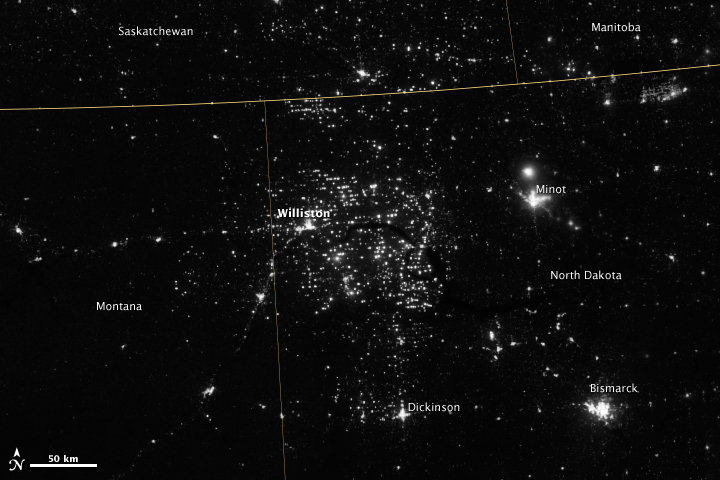It was the satellite image that launched millions of furrowed brows skyward. Scattered across the image’s inky expanse of sparsely populated northwestern North Dakota were the bright blips that indicated the prolific oil and gas operations underway in the Bakken Shale. The nighttime image, captured on Nov. 12, 2012, by a NASA satellite, showed the white specks of light associated with drilling equipment, temporary housing and gas flaring.

In the close to three years since the image was snapped, the industry’s response to those flares and unseen vapor emissions has been swift. There is an increased focus and interest in the technologies that repurpose emissions. More operators are using field gas to keep the generators and engines running on their fields.
In August the U.S. Environmental Protection Agency (EPA) proposed new standards to cut greenhouse gas emissions and smog-forming pollutants from oil and gas facilities. The proposed standards expand on the rules enacted in 2012 and are expected to reduce the equivalent of 7.7 million mt to 9 million mt of CO2 in 2025 at new and modified facilities, according to the EPA.
To accomplish this reduction, the proposed standards would require oil and gas processing and transmission facilities to find and repair methane leaks; capture methane and smog-forming volatile organic compounds from hydraulically fractured oil wells; and limit emissions from pumps, compressors and other equipment.
Jack Gerard, president and CEO of the American Petroleum Institute, responded to the proposal, saying in a press release that the rules were unnecessary.
“The oil and gas industry is leading the charge in reducing methane,” he said in the release. “Even as oil and natural gas production has surged, methane emissions from hydraulically fractured natural gas wells have fallen nearly 79% since 2005, and CO2 emissions are down to 27-year lows. This is due to industry leadership and signifi cant investments in new technologies.”
In the same way that companies squeezed additional value from produced water, new technologies are being developed
that can maximize the value of methane emissions. One example is a turnkey solution for converting natural gas flares
into synthetic crude oil or transportation fuels.
The FLARE BUSTER developed by Black & Veatch and Emerging Fuels Technology Inc. uses a proprietary Fischer-Tropsch reactor/catalyst system to convert wellhead gas into room-temperature, pumpable synthetic crude oil that can be combined with crude oil or turned into transportation fuel blendstocks, according to a press release.
“Waste not, want not” is a lesson that the oil and gas industry has learned the hard way at multiple points in its history. Thankfully, today’s advancements in technology are making it a little less painful.
Recommended Reading
Energy Technology Startups Save Methane to Save Money
2025-03-28 - Startups are finding ways to curb methane emissions while increasing efficiency—and profits.
Pioneer Energy’s Tech Offers More Pad Throughput, Fewer Emissions
2025-01-14 - Pioneer Energy’s Emission Control Treater technology reduces emissions and can boost a well’s crude yield by 5% to10%, executives say.
Then and Now: 4D Seismic Surveys Cut Costs, Increase Production
2025-03-16 - 4D seismic surveys allow operators to monitor changes in reservoirs over extended periods for more informed well placement decisions. Companies including SLB and MicroSeismic Inc. are already seeing the benefits of the tech.
Trump Administration to Open More Alaska Acres for Oil, Gas Drilling
2025-03-20 - U.S. Interior Secretary Doug Burgum said the agency plans to reopen the 82% of Alaska's National Petroleum Reserve that is available for leasing for development.
Momentum AI’s Neural Networks Find the Signal in All That Drilling Noise
2025-02-11 - Oklahoma-based Momentum AI says its model helps drillers avoid fracture-driven interactions.
Comments
Add new comment
This conversation is moderated according to Hart Energy community rules. Please read the rules before joining the discussion. If you’re experiencing any technical problems, please contact our customer care team.




